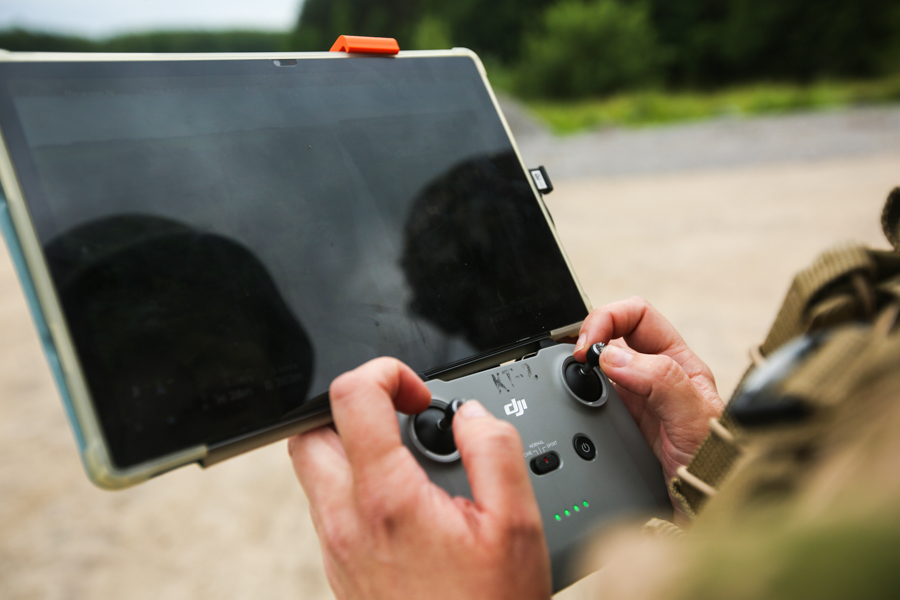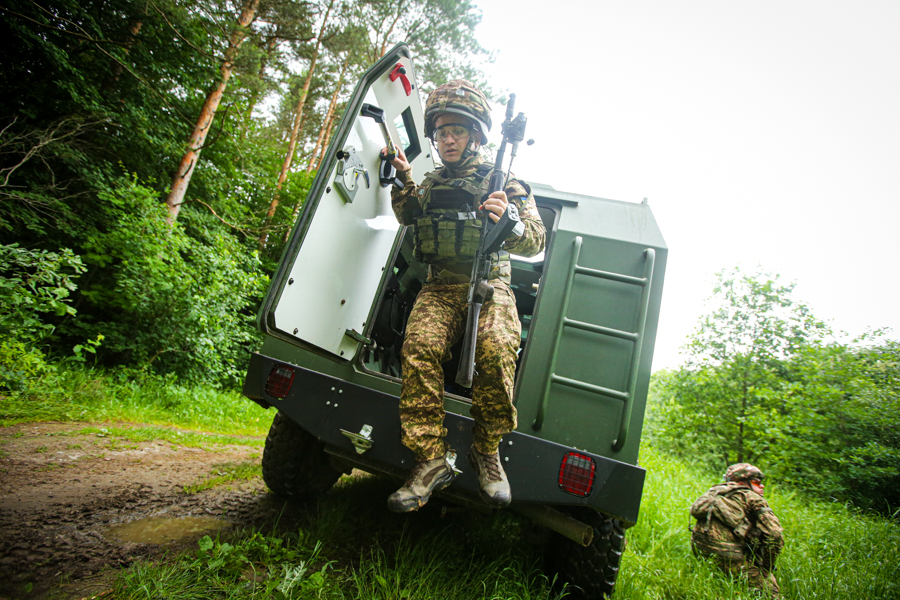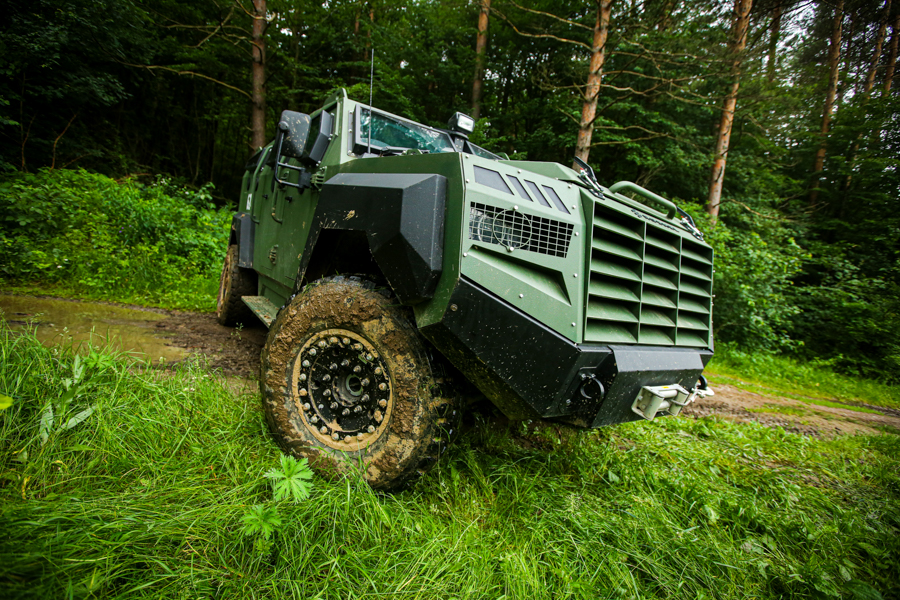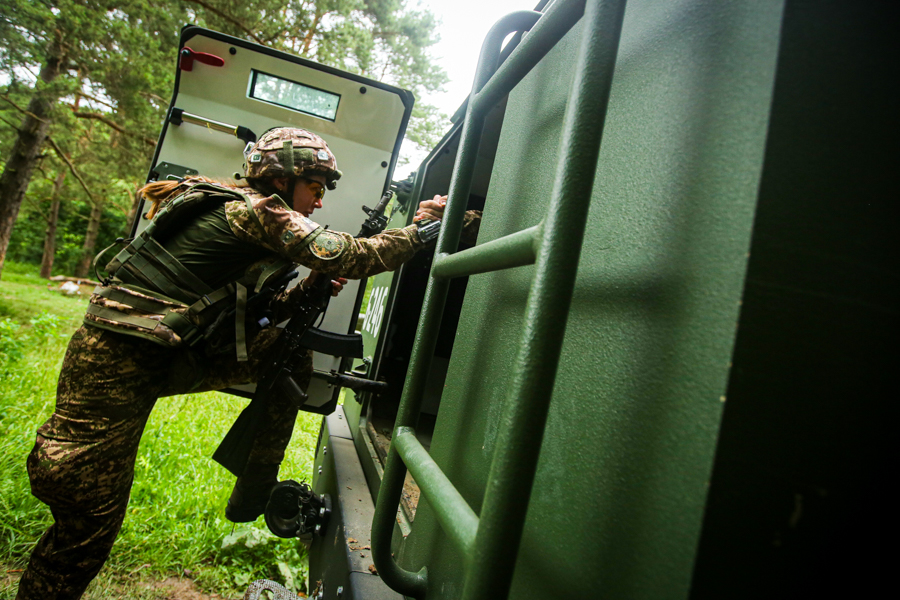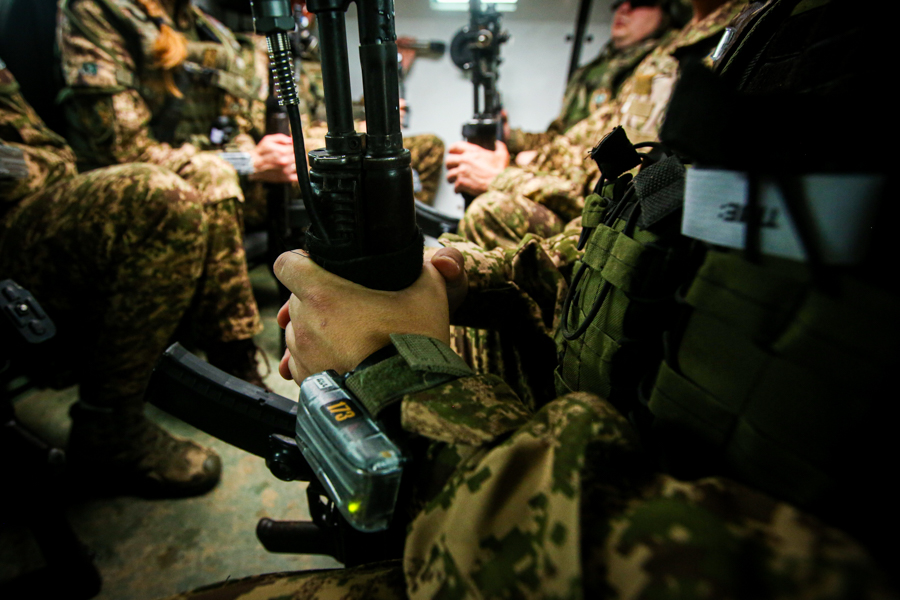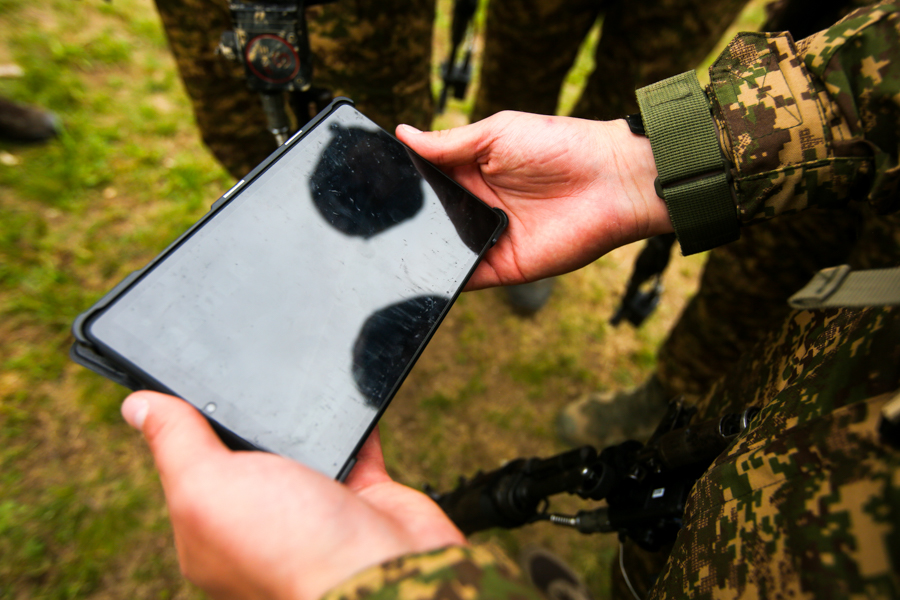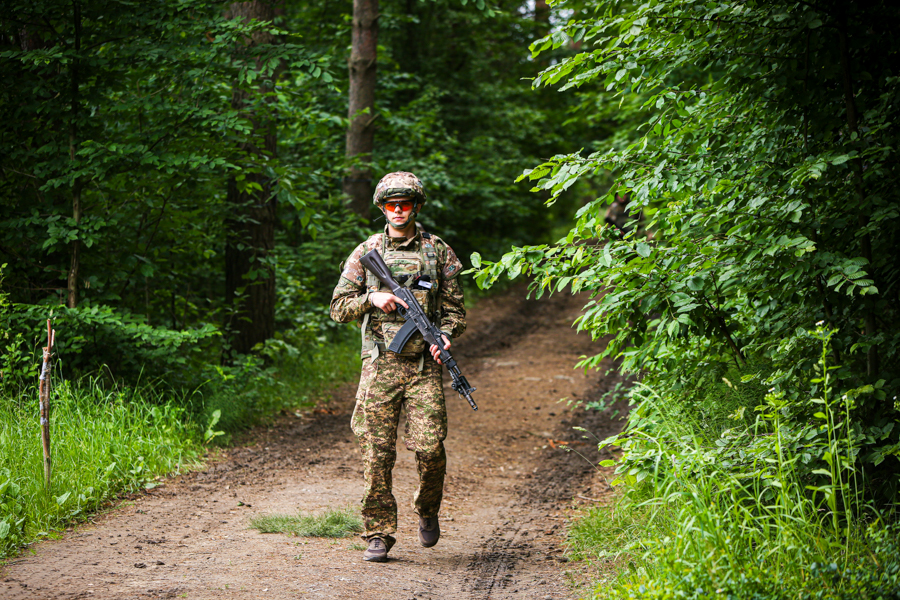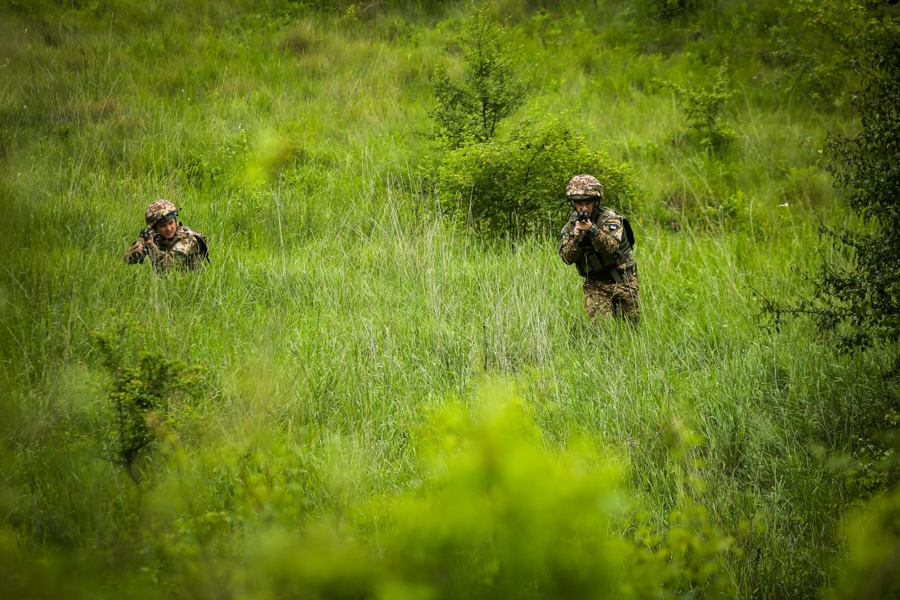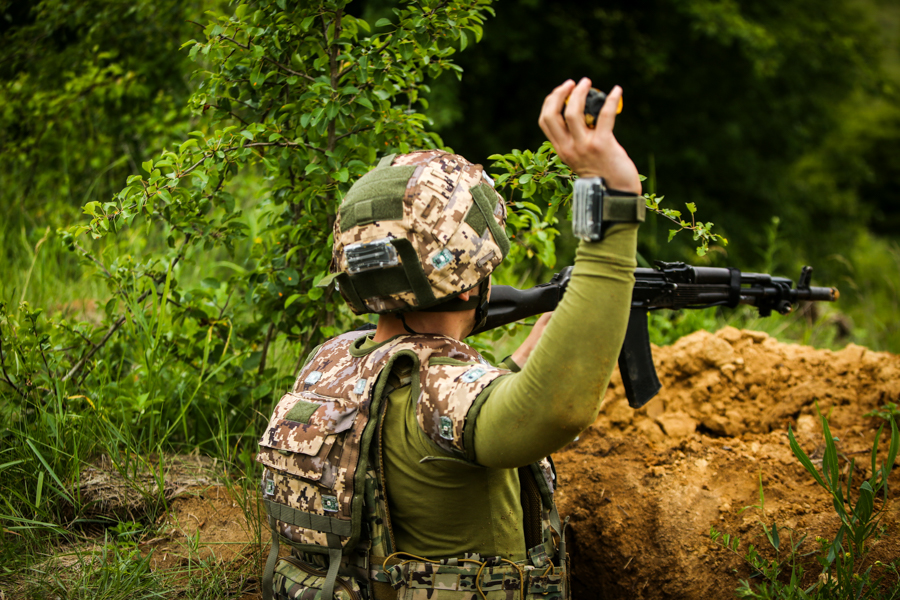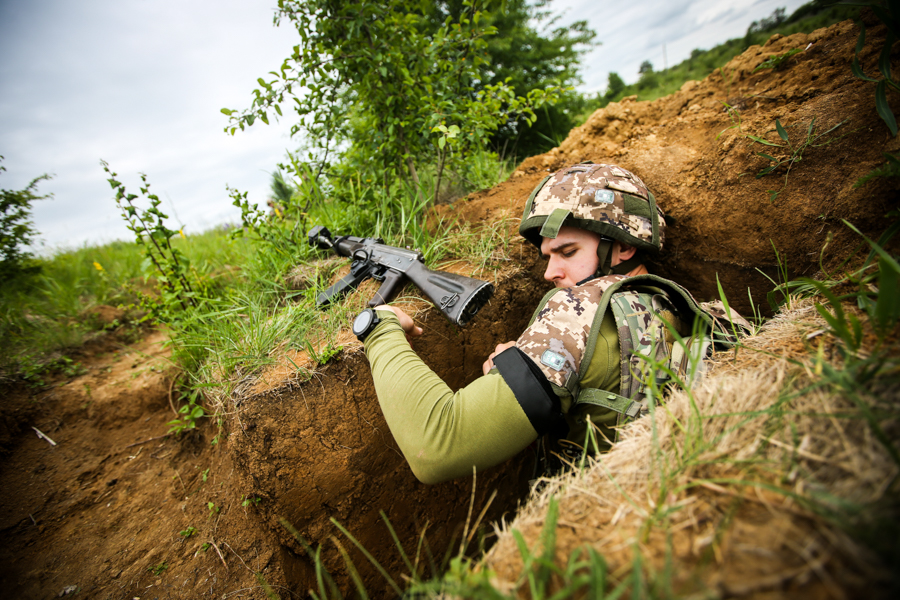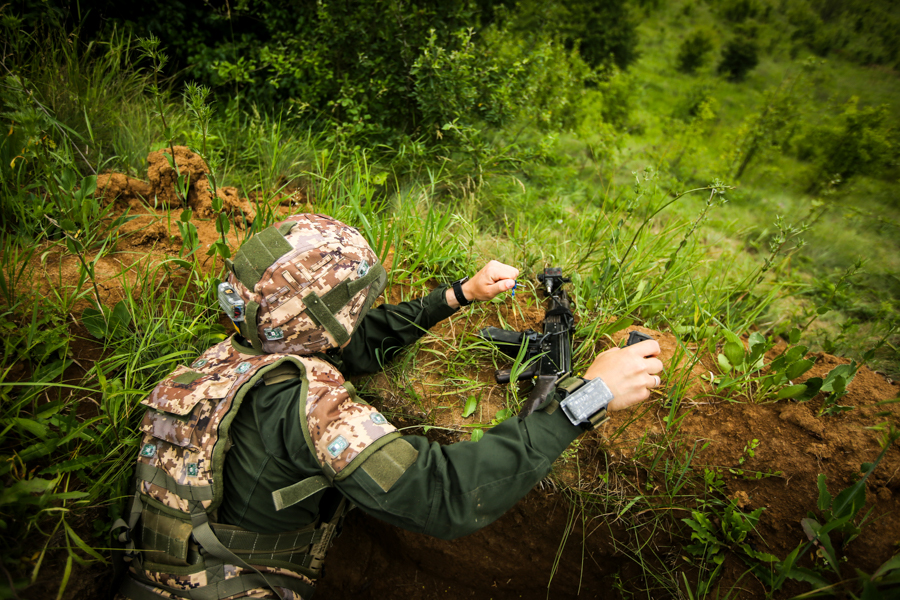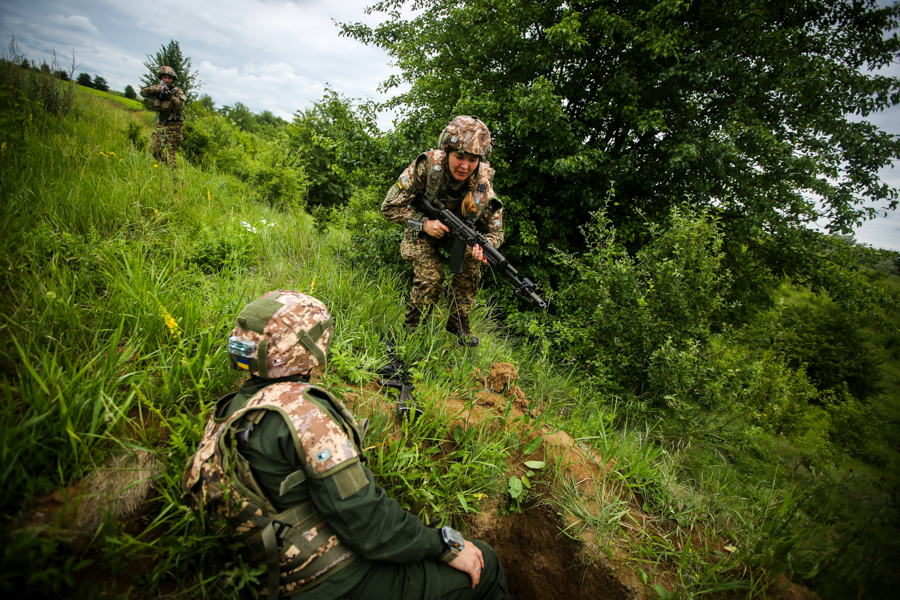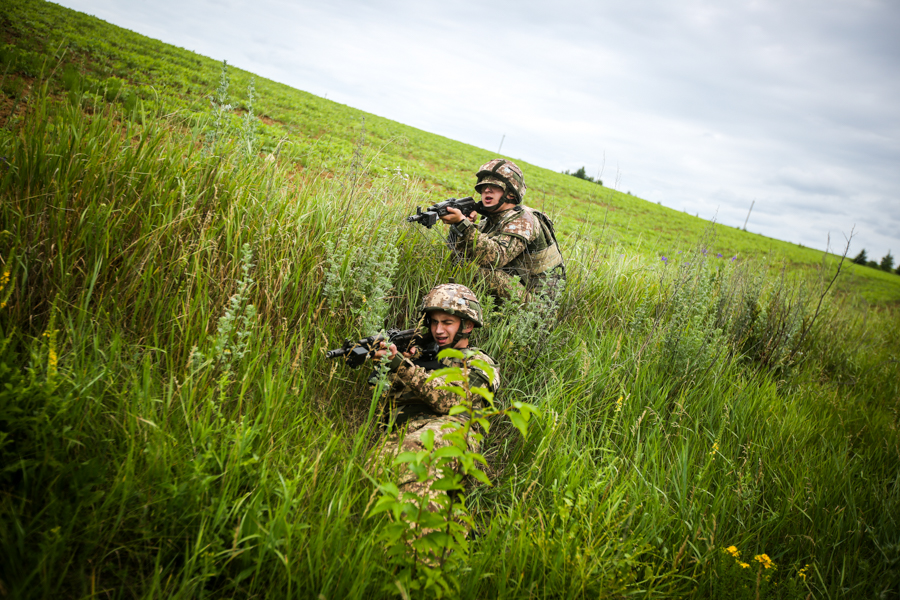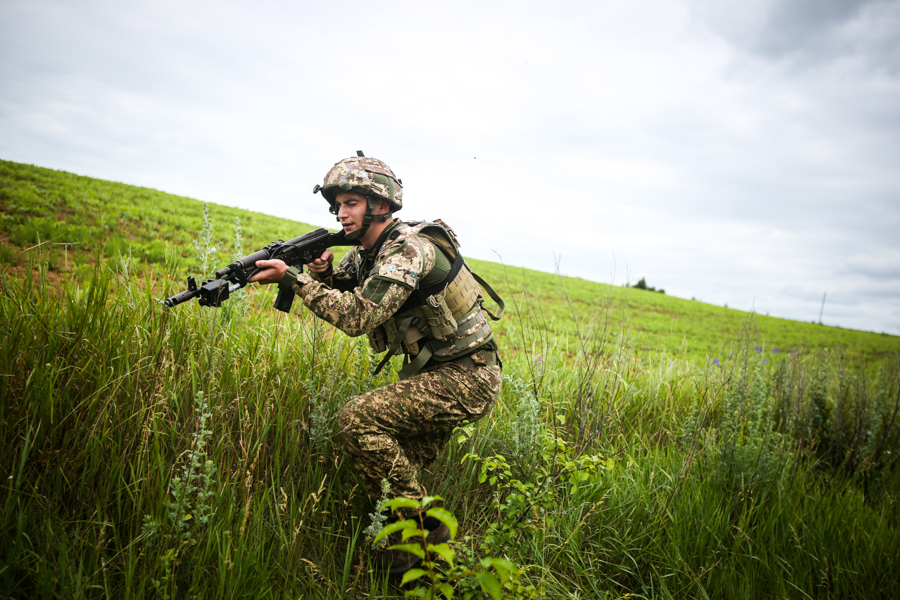Future officers learned to conduct offensive combat using the "Kropyva" software and the SKIFTECH system
Cadets of the Command and Staff Faculty of the National Academy of the National Guard of Ukraine learned to act as commanders of a mechanized unit during offensive combat from deep, using the "Kropyva" software and SKIFTECH tactical training systems.
The boys and girls conducted reconnaissance of the positions of the hypothetical enemy using a quadcopter, defined and performed tasks in the "Kropyva" software complex, and directed the actions of personnel in battle.
"It is very useful that the lesson was in the field and we could feel how to act in real terrain. We went to the position in an armored vehicle and subsequently overcame all the features of the terrain so as not to be noticed by the hypothetical enemy. We also spent a lot of time together with the group performing tasks. I am sure that such coordination will benefit us and in the next training we will understand each other better", – a cadet of the Command and Staff Faculty Senior Sergeant Vladyslav Shpatar said.
During the training, the cadets practiced their ability to manage personnel during: goinging to the attack line, dismounting and deploying into battle formation, and capturing an attack object.
The class was conducted by Associate Professor of the Department of Tactics of the Command and Staff Faculty Colonel Serhii Cherkashyn.
"Practice of such scenarios helps the group to coordinate its interaction and improve the work of managing the unit as a whole. All the knowledge that future commanders receive now will be applied during their service directly in the combat zone. Practice has shown that the SKIFTECH laser simulator system of two-way fire contact is more effective than firing blanks. Thanks to such a system, every serviceman can feel fire contact with the enemy".
The SKIFTECH system is a personal set and simulators designed for training soldiers. The system allows you to practice firing from pistols, machine guns, rifles, grenade launchers and other small arms; train soldiers for special operations of varying levels of complexity indoors or outdoors; practice defending important facilities or offensive actions on enemy’s positions; and conduct training for different numbers of soldiers, taking into account their specifics.
The servicemen note that such kits provide the opportunity to conduct tactical training of guards, which is as close as possible to real combat.
Department of International Relations, Information and Communication of the NANGU

